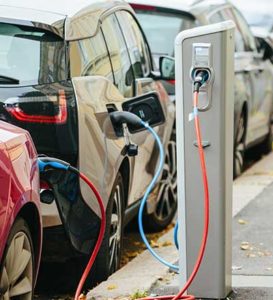 ASCE’s report card does not include a separate infrastructure category or grade for electric vehicles, though it does mention electric vehicle charging stations in its assessment of the electric grid. A baseline of current federal spending on electric vehicles has also not been provided.
ASCE’s report card does not include a separate infrastructure category or grade for electric vehicles, though it does mention electric vehicle charging stations in its assessment of the electric grid. A baseline of current federal spending on electric vehicles has also not been provided.
Senate Republicans did not include investments for electric-vehicle-related infrastructure in their original proposal but have now agreed they should be included. The Common Sense Coalition and the Problem Solvers Caucus also include it. Wide differences remain among the four plans, however, over what to include in the investment and how much to invest.
The American Jobs Plan proposed $17.4 billion in new spending per year for investments in electric vehicles, most of which is divided over three sub-categories. The first sub-category arguably fits the usual understanding that infrastructure includes physical systems built to be broadly available to the public and that help the economy function efficiently. It would provide $1.5 billion per year in grants and incentives for state and local governments to build a national infrastructure of 500,000 electric-vehicle chargers. The other two electric-vehicle sub-categories reflect a broader definition of infrastructure. President Biden proposed $10 billion in new spending per year for rebates and tax incentives to encourage the purchase of American-made electric vehicles. He also proposed $4.5 billion per year to replace diesel transit vehicles with electric ones and to electrify school buses.
The latest proposal by Senate Republicans calls for $0.5 billion per year for electric vehicle charging stations.
President Biden now supports CSC’s plan for $3 billion, half of which would be for charging stations and the other half would be for low and no carbon emission buses and ferries. PSC would invest $3.1 billion for both charging stations and electric buses.

